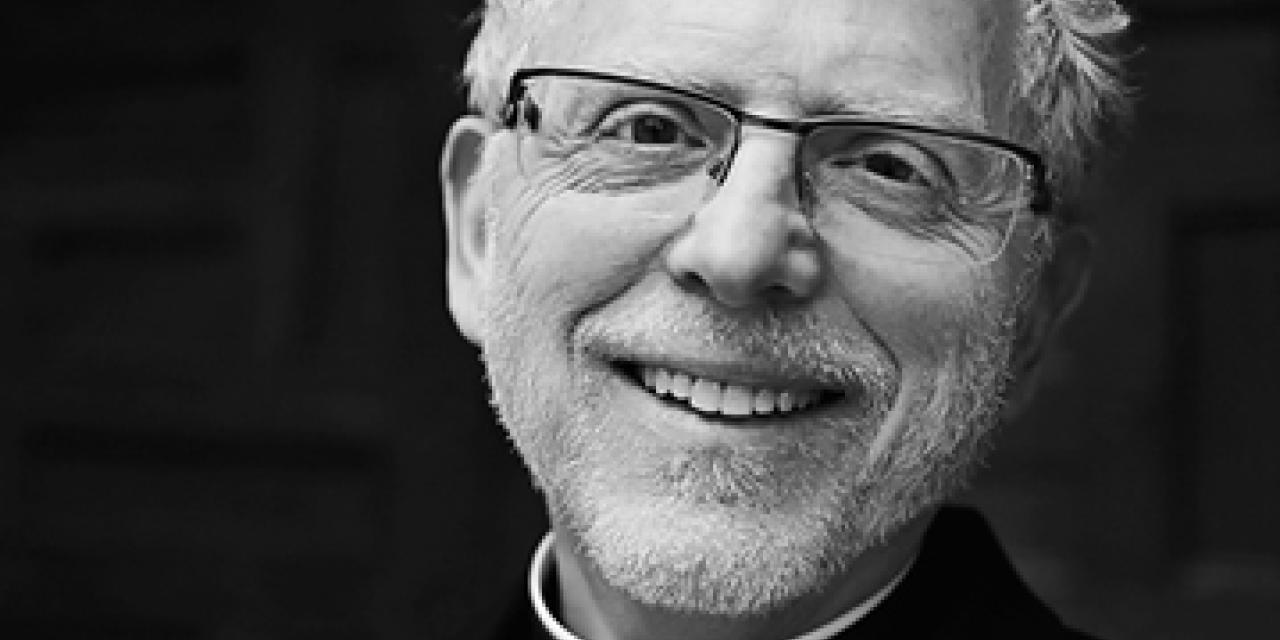As an ecumenical learning center at a Protestant institution, we are grateful to promote learning across many Christian traditions—Orthodox, Roman Catholic, Protestant, and Pentecostal. For many years, Protestant worship students have learned a great deal from the Catholic author Robert Hovda's Strong, Loving, and Wise: Presiding in Liturgy. Fr. Paul Turner now offers a new contribution in the tradition of Hovda, helping us notice the many decisions that all leaders make about their embodied presence in a leadership role. Even those whose worship practices differ widely from the Catholic Mass have much to learn.
Paul Turner is pastor of the Cathedral of the Immaculate Conception in Kansas City, Missouri, and director of the Office of Divine Worship for the Diocese of Kansas City–St. Joseph. Turner, a former president of the North American Academy of Liturgy, is a prolific author and answers questions about the liturgy daily on his blog. In this edited conversation, Turner discusses his new book, Ars Celebrandi: Celebrating and Concelebrating Mass (Liturgical Press, 2021).
Whom do you see as your main audiences for this book, and why did you write it for them?
My main audience is priests, but I expect that bishops, deacons, and seminarians will also be interested in this book. Others who want to learn more about what is going on at Mass will also find it beneficial. Catholics see their priests do things differently, even though we all use the same books and instructions. This book will give them a reference point.
Your book gives several liturgical principles, such as “less is more.” What's an example of the difference between expressive and excessive use of signs, gestures, bowing, and other bodily actions?
Some priests give a lot of commentary. Others extend the time of certain reverences such as genuflections [bending the right knee toward the Blessed Sacrament to express deep respect]. These practices may distract people more than engage or inspire them.
Regarding the rubrics of liturgy, you recommend, “Do what it says; don’t do what it doesn’t say.” How might a priest err while making changes to be “more pastoral”?
Some priests amplify the sign of peace in ways that draw too much attention. Others add rings of the bell at devotional moments. I find that exercising personal restraint helps the words and actions of the liturgy speak more eloquently.
Yet, while affirming simplicity, you write that making slight adjustments to overlooked rubrics can yield rewards. How so?
Many Catholics—whether clergy or lay—are inconsistent in applying gestures such as bows and genuflections. They don’t always follow the rules governing incensations [swinging a censer of burning incense]. Attention to these matters can help people appreciate what matters and what does not.
The widespread practice of giving the faithful communion from previously consecrated hosts in the tabernacle [a liturgical furnishing away from the altar that houses consecrated hosts left over after the Mass] is perhaps the most important practice to change in order to draw out the meaning of the Mass. The people participate most fully when they receive communion from hosts consecrated in the ciborium on the altar at the same Mass, just as the priest does. General Instruction of the Roman Missal (GIRM) supports this in Chapter II, 85.
What first steps might priests take to begin presiding more artfully and intentionally?
They can slow down their speech. Almost all of us recite the words too quickly. They can meditate on the meaning of the prayers, word by word.
How easily do congregations notice such changes, or how do the changes help them participate more fully in the Mass?
Congregations notice that priests do some things differently. They have learned to adapt, but the variations make them wonder who is right. A more careful attention to detail will bring greater uniformity to the celebrations for their benefit.
LEARN MORE
Father Paul Turner’s most recent book is Ars Celebrandi: Celebrating and Concelebrating Mass (Liturgical Press, 2021). Consider using his booklet “The Stations of the Cross in Atonement for Abuse and the Healing of All” (Liturgical Press, 2020). Submit a liturgical question to Paul Turner’s blog. Order a set of his “Bulletin Inserts for the Liturgical Life of the Parish.” Read General Instruction of the Roman Missal (GIRM).

